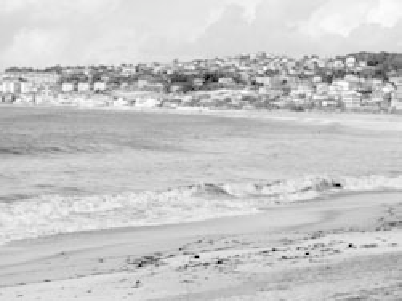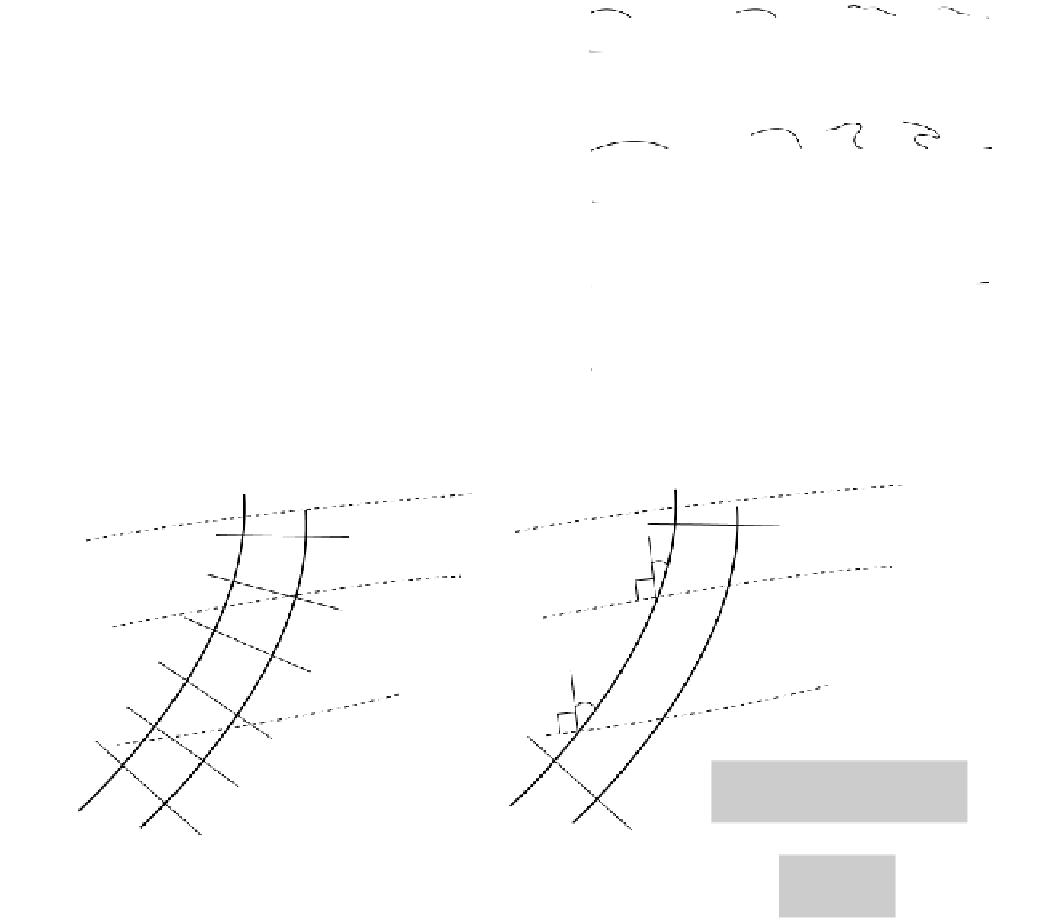Geoscience Reference
In-Depth Information
The nearshore current system may include a remarkable
cellular system of circulation comprising
rip currents
. The
narrow zones of rip currents make up the powerful
“undertow” on many steep beaches and are potentially
hazardous to swimmers because of their high velocities
(several meters per second). Rip currents arise because of
variations in
wave setup
along steep beaches. Wave setup is
the small (centimeter to meter) rise of mean water level
above still water level caused by the presence of shallow-
water waves. It originates from that portion of the
Swell waves
E
1
c
1
Breaking wave
Spilling
waves steepen and then collapse
Amplifying waves
E
2
c
2
Plunging
waves steepen , curl over, and impact
Surging
waves steepen and surge as a bore
Energy flux of swell wave = Energy flux of shoreface wave
or
E
1
c
1
=
E
2
c
2
Fig. 6.43
A familiar sight on the sea or lake coast; swell waves slow-
ing down (
c
1
c
2
) and amplifying over the shelving coast, increasing
in height and steepness until they break on the beachface. Energy
flux (power) is conserved throughout until finally dissipated in the
turbulence, cavitation, and sediment transport of the swash zone.
Fig. 6.44
Types of breaking waves.
c
2
Ray 1
Ray 1
Ray 2
Ray 2
Shallower
E
2
s
2
h
3
Crest
u
2
h
3
h
2
h
2
h
1
u
1
h
1
slower
DEEPER
c
1
Kinematic/geometric relations
gh
1
h
1
sin
u
u
1
c
1
h
1
s
1
Crests swing into
parallelism with
the bathymetric
contours
=
=
=
=
sin
c
2
h
2
gh
2
h
2
Rays are
drawn normal
to wave crests
E
1
Energy conservation relations
Faster
E
1
s
1
=
E
2
s
2
H
1
2
s
1
=
H
2
2
s
2
Fig. 6.45
Wave refraction from deeper to shallower water by shallow water waves of height H whose speed is purely a function of water depth.







Search WWH ::

Custom Search